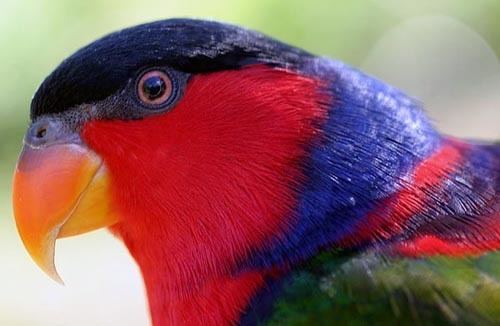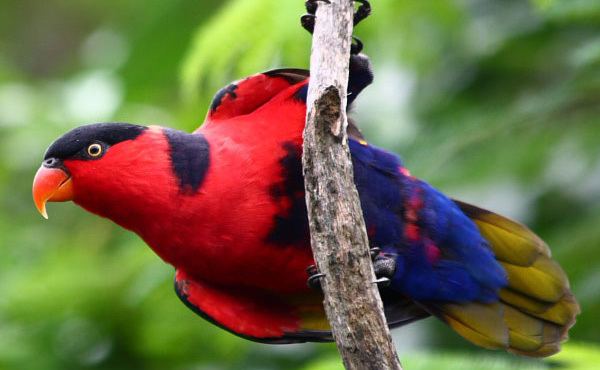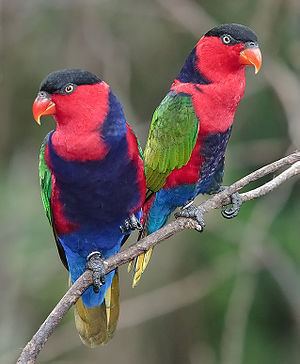Order Psittaciformes Rank Species | Phylum Chordata Superfamily Psittacoidea Subfamily Loriinae | |
Similar Lorius, Lories and lorikeets, Bird, Parrot, Chattering lory | ||
The black-capped lory (Lorius lory) also known as western black-capped lory or the tricolored lory, is a parrot found in New Guinea and adjacent smaller islands. It is a colorful and relatively robust lory (31 cm). There are seven subspecies, all with green wings, red heads and body around the wing, a black cap, grey-black cere, yellow underwings, and blue legs and belly. Most also have a blue nape and mantle (area between wings on the back). It remains overall widespread and common, but the subspecies cyanuchen is relatively rare, with fewer than 5000 individuals remaining.
Contents

Subspecies
The subspecies vary considerably in color:

Behavior

Their black-capped lory inhabits the primary forest and forest edges in most lowland areas up to 1000m (sporadically to 1750m), but not monsoon forest or coconut plantations. It is usually found in pairs and occasionally in groups of 10 or more. Their diet includes pollen, nectar, flowers, fruit and insects.
